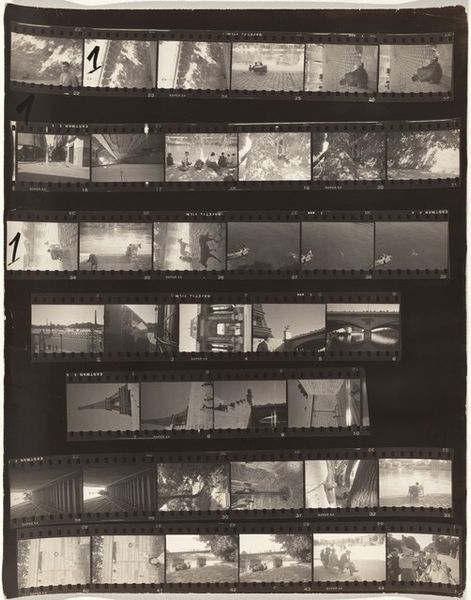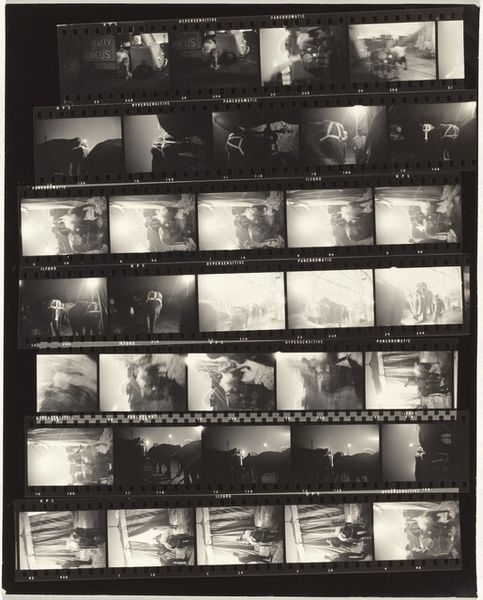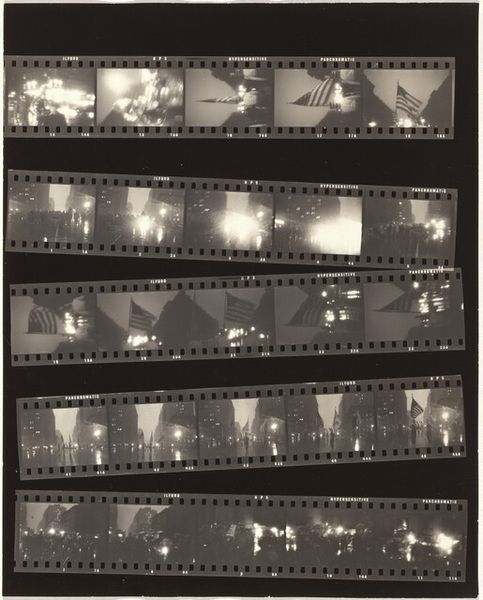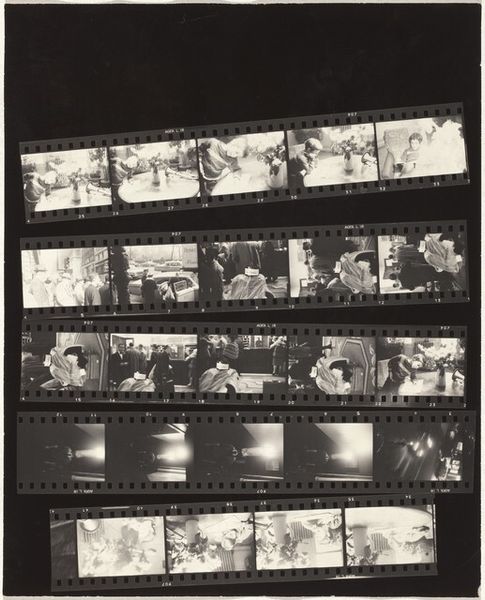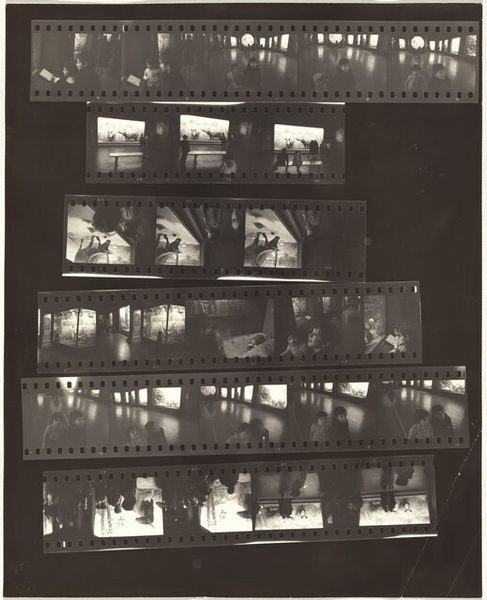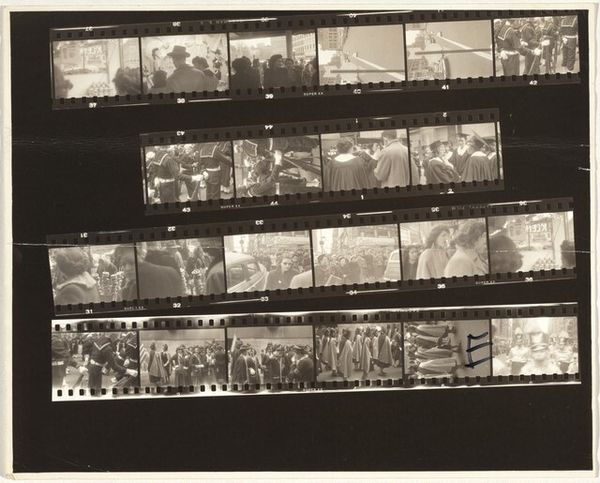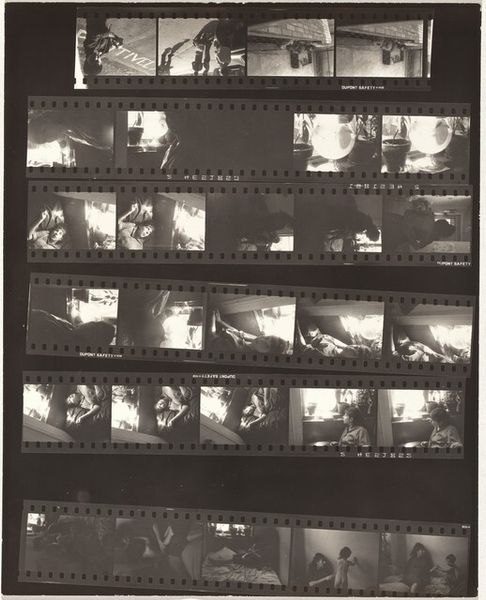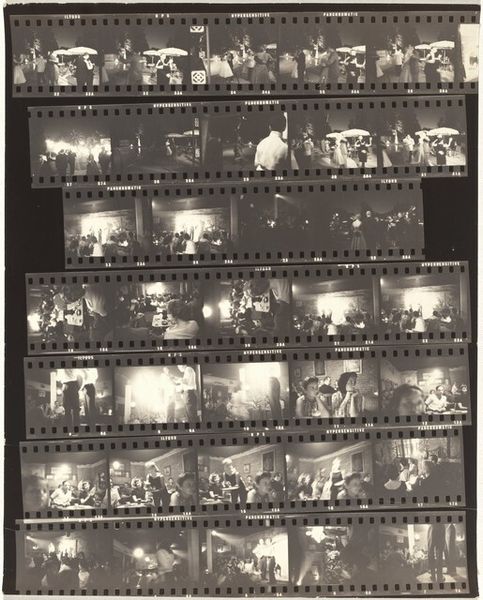
contact-print, photography
#
contact-print
#
street-photography
#
photography
#
cityscape
#
modernism
Dimensions: sheet: 25.2 x 20.2 cm (9 15/16 x 7 15/16 in.)
Copyright: National Gallery of Art: CC0 1.0
Curator: Looking at Robert Frank's contact print, "United Nations building--New York City no number" from 1954, I'm immediately struck by its raw, almost fragmented feel. The varying images, the sprocket holes – it doesn't offer a polished view. Editor: Absolutely. There’s a definite tension present. The UN building should project an image of global unity, yet here, it's depicted in these fractured glimpses. Is it intentional subversion, do you think? A commentary on the UN's aspirations versus its reality at the height of the Cold War? Curator: Precisely! We have to consider Frank's broader project at this time. He was deeply critical of American society and power structures, right? Placing this image within his critique is essential. These strips suggest the fragmented nature of the promises that these organizations try to convey and what their real scope actually looks like. Editor: And there’s a contrast, too, with the modernist architectural style, so clean and utopian in its ambition, now viewed through this grainy, almost documentary lens. How does the modernist structure relate to the ideas of race and power that Frank explores elsewhere? Curator: The flags outside evoke the many national identities the UN aims to unite. However, the rows of blurred people and the unideal representation can almost indicate their exclusion in some contexts. His approach raises questions about access and privilege, who is seen and who is overlooked in global structures, which relates to issues he documented in other works regarding racial inequality, and which are further discussed and explained today. Editor: Right, by presenting the UN in this fragmented contact sheet, Frank seems to refuse a singular, celebratory narrative. Instead, it suggests multiple perspectives and the unresolved contradictions inherent in such a global institution. Even his selection of materials makes a statement, don't you think? Curator: Exactly, in looking closely at how those images were developed into the photograph that he released and sold, we can extract certain aspects of it. The final photograph seems like a compromise from what this whole image says, because it feels too resolved when compared. Editor: It gives me so much food for thought. These are challenging times. What's clear is that a piece of work like Frank’s compels us to keep questioning the stories we're being told about progress and who gets to shape them. Curator: Indeed, it encourages us to look behind the constructed image, beyond the polished facade, to the complexities and sometimes unsettling realities that lie beneath.
Comments
No comments
Be the first to comment and join the conversation on the ultimate creative platform.



